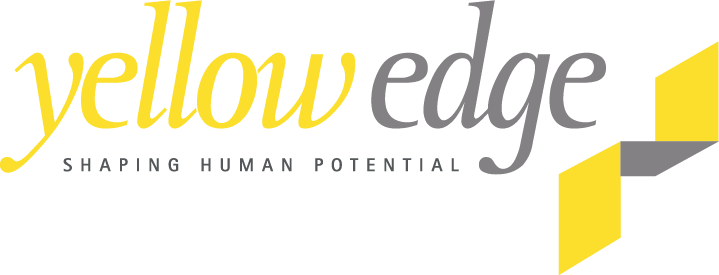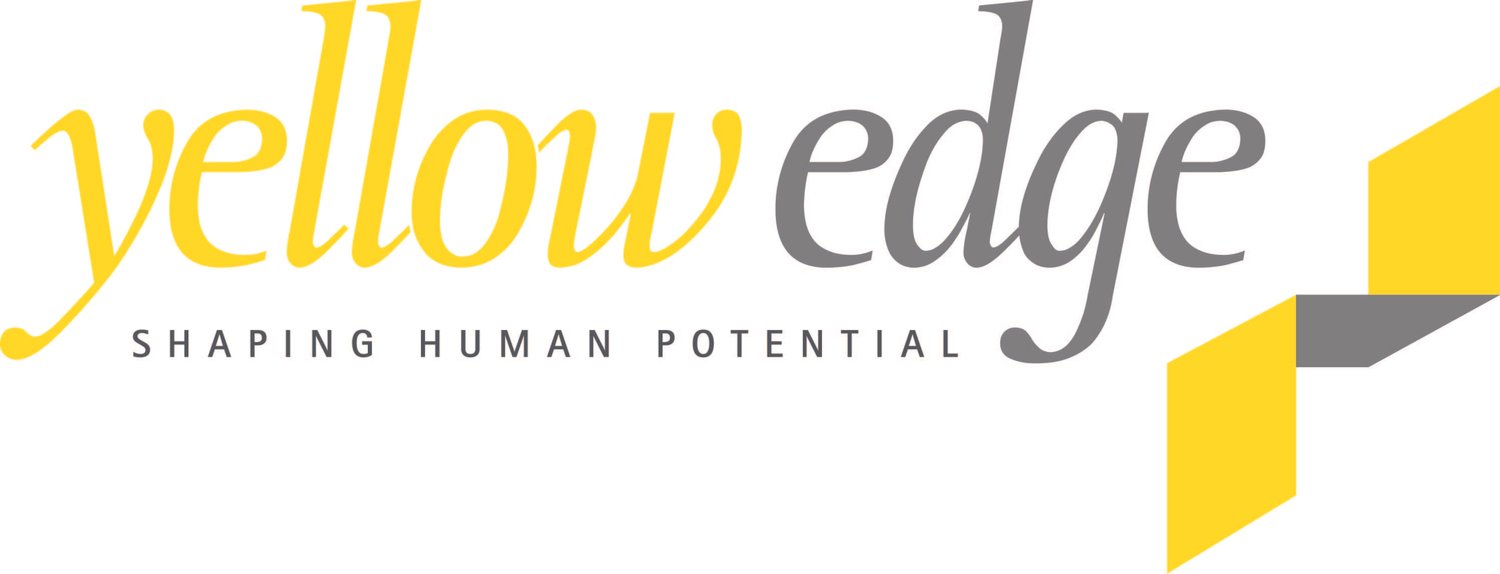54. Shaping the Future of HR
by Andrew Simon and Brooke Anderson
THE POST COVID WORKFORCE
As organisations begin to plan their recovery, many are starting to contemplate what the post-COVID-19 workforce might look like.
Knowing what will change and what will revert can be tricky as so many things remain unclear. What forms of social distancing will continue? How will the workforce be accommodated? What will we do with our office space? Who will work from home? How do we manage the performance and wellbeing of a distributed workforce sustainably? How do we build capability and culture virtually? How do we engage with our stakeholders. What kinds of new infrastructure do we need for our workforce?
There are no ready made answers to these questions of course and every organisation will need to grapple with these and other complex questions in their own context.
At Yellow Edge, we’ve begun thinking about some of these questions deeply and have framed several Discussion Starters which we hope are useful to you and your teams as you look to and plan for the near future. In framing these discussion starters on Learning & Development, Performance Management, and Stakeholder Engagement as the first of several explorations, we reflected on*:
What workforce arrangements, practices and processes that have been implemented during COVID 19 would people find attractive or appealing and want to keep?
What forms of workforce or organsiational inertia have been broken?
What forms of workforce or organsiational inertia will return?
In what areas is there critical mass for change in workforce arrangements?
What kinds of workforce or organisational infrastructure are available to enable or bake in change?
We present and share three discussion starters with you. They represent our thoughts on possibilities. We also hope that they spur your own explorations and insight to fuel action to shape a high performing and well supported workforce as we all navigate a post COVID 19 world.
* Questions based on Managing through the Coronavirus Phase by Phase. (April 2020) New Markets Advisors. Boston.
PERFORMANCE MANAGEMENT FOR A POST COVID 19 WORKFORCE
In a post pandemic world, many workplaces may see some or even a majority of staff continuing to work from home for periods of time. And even if this doesn’t happen and everyone comes back into the workplace, people may not easily accept a return to old ways of being managed, where physical presence, working to official hours and visibility were pre-requisite norms for performance.
How do we think about and approach the management of performance of our people in the context of new awareness, new expectations and anxieties and emerging models of work? Should we now not start to think about supporting and empowering people to manage their own performance?
Traditional ways of managing performance with the once or twice a year formal performance feedback discussions and ratings have had their day. It’s time to bury these unsatisfactory approaches. The old kinds of performance management models will not work when team members are not constantly visible, where trust is fundamental to the effective functioning of teams whose members are dispersed, where work time is shaped by accessibility and flexibility not visibility and clock on/off time and where more than ever, people are working to produce outputs and deliverables and to achieve goals and outcomes.
Leading performance rather than performance management is the new paradigm. In this new paradigm, performance is a consequence of values, trust and accountability; clarity of intent, goals and outputs; collaboration and collective contribution, purposeful conversations and leaders with a higher level of skill and the ability to let go while paying attention.
It will also require organisatuons to have better systems and tools to support people in their performance. For too long, traditional performance management systems have hamstrung and retarded good practice and compelled leaders and managers to contort and distort their effort to comply with clunky system templates, processes and imposed time frames that are not in sync with the tempo of diverse workforces.
The new paradigm will require systems that are light and flexible, enable and facilitate just in time, feedback conversations triggered by work events, empower employees to steer and own discussions about their own contribution, outputs and achieved goals and provide real time analytics that properly inform capability investment decisions by the organsiation.
LEARNING AND DEVELOPMENT FOR A POST COVID 19 WORKFORCE
The COVID 19 situation has forced learning to go digital in organisations. Whether through webinars, virtual workshops, accessing content from a host of delivery platforms or social media or through traditional asynchronous e-learning programs, necessity has forced learning into the digital space more convincingly that any other driver. Technology, contrary to all the hype we have been sold for so long, has not been a driver of learning here. Contagious disease has. Technology has merely allowed people and organisations to respond.
But what will learning and development be like in a post COVID 19 world? Who can really tell for sure? Rather than wait for what might come, smart organisations will be moving more assuredly towards a learning and development future that is more multidimensional, smaller in scope (microlearning) mobile enabled and learner led than before. The opportunity for empowered learners to tap into a multidimensional learning environment enabled by digital technology, to be able to address workplace knowledge and skill needs in real time, without geographic or physical space constraints is now a reality.
If we now realise that much work in the digital economy can be conducted from almost any home, then it follows that learning and development can occur in the same way. While learning in a face to face environment may be preferable, from a social and even management point of view, it has become clear that organisational learning and development is no longer contingent on this. Digital learning can be social as social media platforms continually demonstrate, even if there are limitations, risks, fidelity issues and constraints with the actual digital social experience.
This is not new to any competent educator or any active learner of course. Active learners can learn in most situations and with imagination and creativity, competent educators and facilitators can enable learning even in the simplest of environments.
But now with such a rich, complex field of learning material, delivery platforms, content and access to subject matter experts from across the world, how can organisations manage this in a way that offers benefit to their people in areas that matter to organisational goals and outcomes?
Part of the way ahead, perhaps lies in conceiving the learning and development function as one of curation. A function with an inquisitive and critical capacity that can bring together a range of learning resources (including fac to face activities) for learners to use as part of
a common curriculum or in designing their own individualised programs which supervisors can sign off on. Such programs could be structured to enable learning both in micro chunks and in deep dives.
Such an approach is really grounded in basic principles of adult learning, where in response to needs and opportunities, the adult is empowered to think about and act on their learning in a more thoughtful, timely and accountable manner. For such an approach to work however, several conditions would need to be in play:
A high trust, accountable organsiational or team culture.
Leaders and managers who are interested in the development of their people and who can act As coach to their employees as they go through their learning journeys.
Flexible, light, mobile accessible learning platforms that allow the curation of material, plug in apps, the linking of external learning resources, enable just in time micro learning as well as deep content learning, active experiential reflection and peer to peer learning and support.
STAKEHOLDER ENGAGEMENT FOR A POST COVID 19 WORKFORCE
There is no doubt that the COVID 19 pandemic has introduced new challenges to the business environment. Many organisations are changing the way they operate, including re-thinking the role stakeholders and citizens can play in their recovery phase and beyond.
Understanding and responding to the changing preferences and expectations of stakeholders will help organisations in the COVID-19 recovery phase. Stakeholders can help organisations build a more complete picture of strategic business environment. But how do successful organisations do this? How do they remain relevant and serve stakeholders and citizens in the future? Many would agree that organisations face an uphill battle without a strong and well-resourced communications and engagement strategy.
Sometimes it’s not possible to rely on an organisation’s existing structures, policies and processes to facilitate effective stakeholder engagement. Organisational leaders will need to adapt, demonstrate flexibility, be inclusive and reach out to stakeholders and communities, engaging with stakeholders and citizens on their own tuff. Engaging citizens and communities outside of the organisation may present some level of risk but may also present opportunities to work more collaboratively, facilitate knowledge and capability transfer and help organisations to navigate and respond to new and developing challenges.
What will stakeholder engagement be like in a post COVID 19 world? Who can really tell for sure. But some recent governmental responses to COVID 19 can be instructive. We see government and union cooperation, multi sector commissions and taskforces and the clustering of government agencies which have shared and interconnected interests on a particular national issue to provide holistic responses. These and other examples demonstrate that stakeholder engagement can, and does, take many forms. We are seeing smart organisations:
Listening to their stakeholders and their communities through digital crowdsourcing and social media listening and as a result, adopting more empathetic perspectives.
Encouraging and enabling open data, the sharing of data, stories and knowledge which builds understanding and transparency and allows people to make connections, generate goodwill and empowers the development of local solutions.
The use of well crafted, empirically based scenarios to educate and prepare stakeholders as well as to generate stakeholder insight for organisational sense making and planning.
Reflecting upon, reviewing and refining organisational purpose, strategic priorities and performance targets in partnership with (not just in response to) their stakeholders and citizens.
Treating technology as an enabler of engagement and a way to tap into and better understand the drivers of stakeholder needs.
Finding creative opportunities to position end-users at the heart of actual service design through co-design and co-production initiatives using digital codesign/collaborative software and platforms.
by Andrew Simon, Co-Founder and Chief Executive, Yellow Edge.
Brooke Anderson, Principal Strategist. Yellow Edge
Yellow Edge is a local, privately owned Canberra based consulting company focused on helping individuals, teams and organisations to achieve high performance. Yellow Edge is a certified BCorp. BCorp companies make decisions that make a positive impact on their employees, customers, suppliers, community, and the environment. https://www.bcorporation.com.au/


